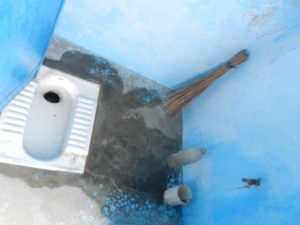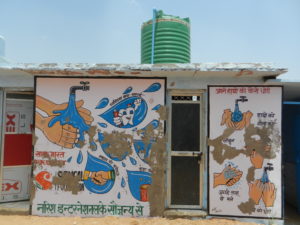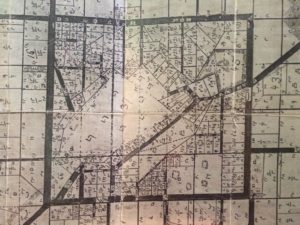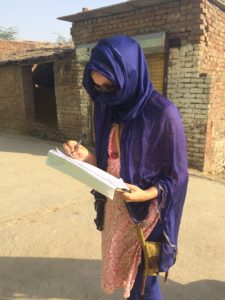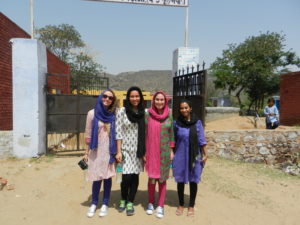 (Stephanie, Jacqueline, Rachel and Prerana visiting the school in Bhadauji)
(Stephanie, Jacqueline, Rachel and Prerana visiting the school in Bhadauji)
Our project consists of two main areas. First, the promotion of good sanitary practices as well as the implementation of toilets in the villages of Mundheta & Naseerpuri. Second, the creation of an impact assessment in the implementation of toilets in the villages of Bhadauji and Bhajeda from the project last year. In the Impact assessment we will be evaluating the health and social changes that people in the community have felt in the past year after constructing their toilets as well as studying the progress and set backs that the villagers had while implementing latrines in both schools and individual homes.
Impact assessment:
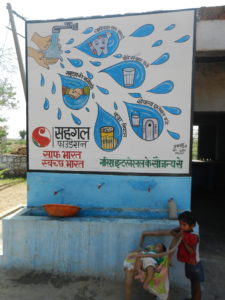
(Information education communication on sanitation located in the hand washing station of the Bhadauji school)
When visiting the schools in both villages we specifically observed the condition of wall paintings that were designed by the internes from last year and the cleanliness condition of the latrines. In the first village we observed that the painting promoting sanitation above the hand washing station was intact as well as the step by step instructions for hand washing places in another area of the school. The latrines in the school located in Bhadauji was very well kept because the administration had the necessary monetary resources to purchase water in large quantities to power the restrooms. The administration said it took a very large portion of their budget but it was a necessary step in order to ensure the sanitation of the children and teachers.
(Toilet specifically for girls implemented in the school of Bhadauji by the project last year)
In the following image you can see how due to the climate and the children having reach of the painting it has started to fade. Although it is something the children can still read and it is a useful tool as a reminder to wash their hands, it would be ideal to have the wall painting retouched so anyone new to the school can read it. Another problem we observed from the second school (in the Bhajheda village) we visited was the fact that water availability was scarse and they did not have the same resources as the previous school to get the necessary water required for the upkeep of the toilets.
We will be having a discussion with the children of each of these schools to measure how much information they were able to retain from the workshops taught in the project from 2015.
(Information education communication painting on the toilet entrance in the school of the Bhajheda village, in need of repairs)
Toilet promotion and Implementation:
On may 18th we had a field visit to the Mundheta village to map the 530 houses and find out how many have toilets. A map needs to be in place in order to know which specific houses in a village do and do not have toilets in order to know the location and better target the population that are in need of building a toilet in their house. We were provided with this map to get a rough idea of the different areas of the village in order to decide what areas should be mapped first. We decided to split into two groups in order to most effectively map the area and each group had a translator, a person in charge of mapping, two field staff and a note taker. We had to go to each household, creating a map of what street it was located in and where specifically it was located in relation to the houses around it.
I was in charge of creating the map in my group, and Rachel was writing down the answers to our short survey. We asked the following questions:
(Stephanie mapping the Mundheta village)
By the end of the day we had gone through two sides of the village and mapped around 220 houses combined. We will be going to the field again tomorrow and attempting to map the remaining 310 houses to complete the full map of the Mundheta Village. When we receive the information on the specific location of houses without toilets in the village, we will be able to hold workshops that will promote the use and construction of toilets.
Stephanie Muench

